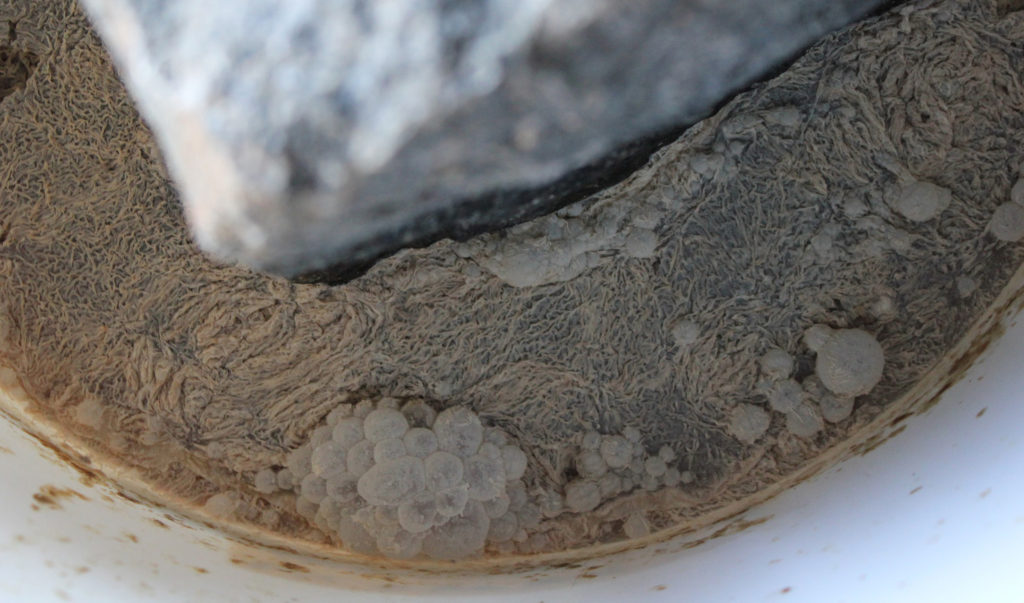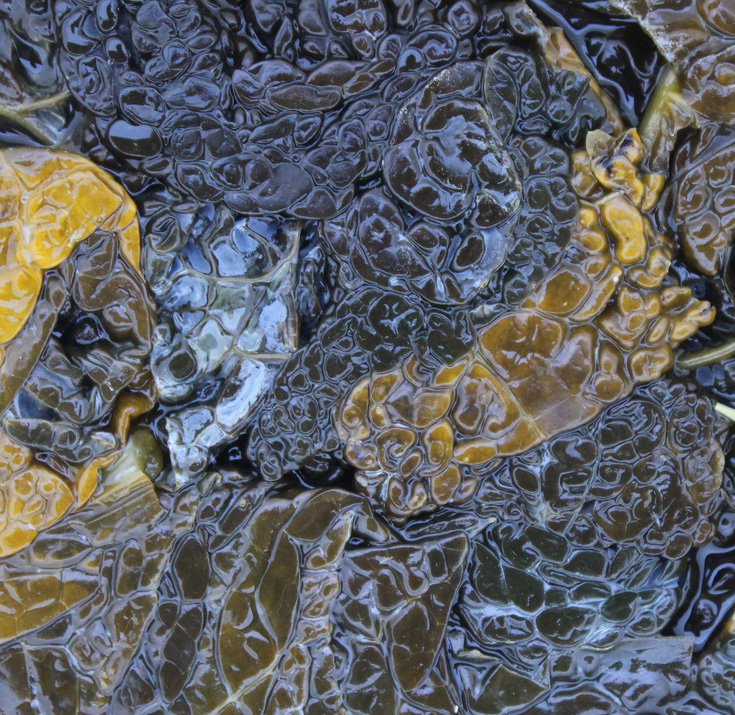posted by Josh Evans
We’ve been brining all sorts of things for months, experimenting with different concentrations of salt, lengths of pickling, temperature and pressure. It turns out lactic fermentation is hugely versatile, working with all sorts of substrates and under various conditions. Then we started making ‘brine’ with liquids other than just water, and entered a whole new world of fermentation process and complexity of flavour.
One of our first trials: Cavalo nero kale in beer brine. We rolled the leaves, packed them tightly with a plate and weight, and poured over a brine of Herslev Bryghus Organic Stout and 2% salt.
At first the mixture bubbled gently as we expected. But after not too long we knew we had a new type of beast on our hands. The brine formed an impressive mycoderma – a type of mould (literally ‘fungus skin’) that often forms on fermenting wines and vinegars. I wonder if it formed so readily here because of the extra yeast in the beer. We removed it, but not before capturing its crinkled texture and bubbles of carbon dioxide effusing from below.

Luckily, when we skimmed off the mould and lifted out our weight and plate, we had beautiful, unspoiled beer-brined kale tops to try.

The flavour is phenomenal – it fills the mouth like a good ripe cheese, with that savoury lacticness we know and love in kimchi. But the beer adds a whole new angle to the pickle: deep, barely sweet, and somehow overwhelmingly umami. Perhaps the yeast is autolysing or is being broken down by other enzymes from the bacteria, adding free amino acids to the mix. Kale is a great vehicle for the process, its mustardy cruciferous notes enlivening as it takes on tang of the lactic acid and the richness of the beer.
The texture is supple yet crunchy, like a good kraut. One of its English names, dinosaur kale, makes even more sense now, the scale-like pattern of the leaves glistening in the brine.
